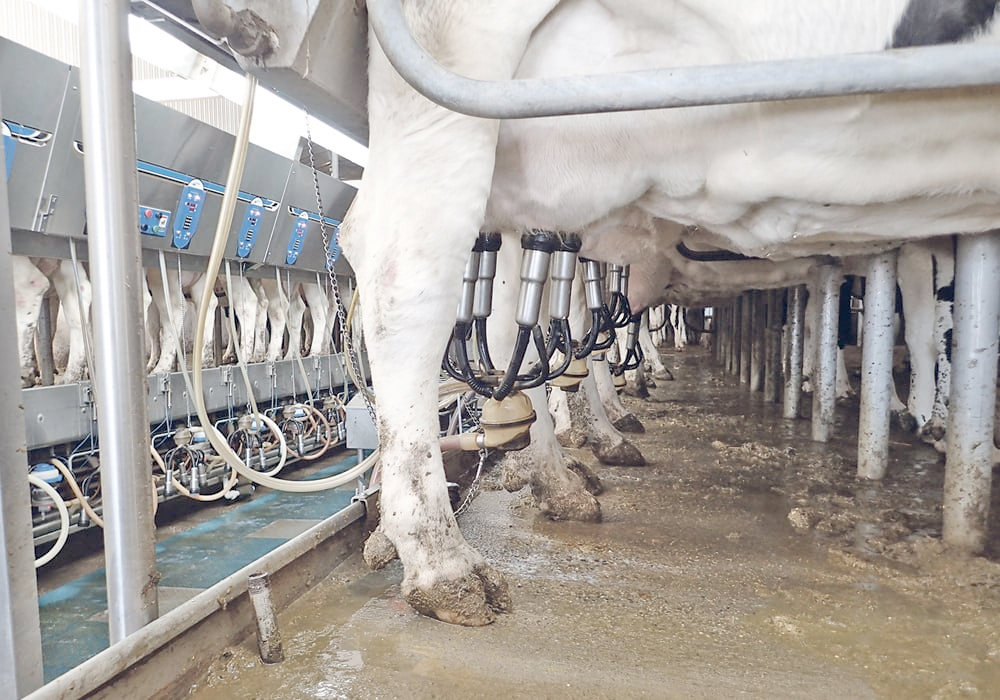Canada’s beef industry has science on its side when it comes to the safety of using growth promotants, but it is of no help when it comes to selling beef overseas.
“We can talk about science-based (practices), but at the end of the day, if the consumers don’t want to buy our products, I think we’re missing the mark,” said Fred Gorrell, an assistant deputy minister with Agriculture Canada.
Gorrell made his comments about beef production and growth hormones Feb. 8 at the Manitoba Beef Producers annual meeting in Brandon. He was formerly the head of the market access secretariat with the Canadian Food Inspection Agency and also worked as executive director of international policy at the CFIA.
Read Also

Farming Smarter receives financial boost from Alberta government for potato research
Farming Smarter near Lethbridge got a boost to its research equipment, thanks to the Alberta government’s increase in funding for research associations.
He is now the assistant deputy minister for international affairs at Agriculture Canada.
Gorrell made it clear that the department supports the use of hormones in the beef sector, where growth promotants are used to increase the feed efficiency of beef cattle.
But some consumers, particularly in European Union countries, want beef produced without the use of growth promotants. In his opinion, Canada’s beef industry is “leaving money on the table” by not serving that segment of the marketplace.
“Hormone free or with hormones, they’re all safe…. (But) if we want to be in that market and (if) we want to sell product there, you have got to have the conversation.”
Thanks to the Comprehensive Economic and Trade Agreement (CETA) with Europe, Canada’s beef sector will eventually get a tariff-free quota of 50,000 tonnes of beef annually to the EU. The beef, though, must be raised without growth hormones. The Europeans have also put up a technical hurdle and don’t accept the safety of certain carcass washes used in Canada.
It may take years to sort out the rules around carcass washes, but there is another massive market that also wants beef raised without hormones — China.
“On beef and pork, they (China) have always said, ‘we don’t like growth promotants,’ ” Gorrell said at the Brandon meeting. “They’re looking for hormone-free beef and pork, not just from Canada but the world.”
A CFIA website explains that Canadian beef destined for China must be raised under the Canadian Beta-Agonist Free Beef Certification program because China doesn’t accept beef produced with synthetic growth hormones.
China began accepting Canadian beef again in 2012. Exports to China climbed from nothing to $228 million in 2015, based on Ag Canada data.
“But in 2016 … you see the numbers went down quite a bit,” Gorrell said. “That’s because they’re being very strict, saying (they’re) having a hormone-free program.”
Canadian beef producers and industry advocates have said, many times, that growth promotants pose no risks to consumers because they add only a few nanograms of hormones to a hamburger or steak.
That message hasn’t changed many minds, as public polling shows the percentage of Canadians concerned about hormones in meat hasn’t changed since 2001.
“There’s science, but there’s also political science and there’s social science. Those come into the mix too, sometimes,” Gorrell said. “Being right doesn’t mean that you win.”
Betty Green, a beef producer from Fisher Branch, Man., listened to Gorrell’s message. She runs two programs with her herd of beef cattle: one with growth promotants and another without.
“He wasn’t telling us that everybody should run down that path, but that consumers and customers are going to have an influence on what we have to do … and we should give some thought to that.”
Five to 10 years ago, ranchers didn’t talk about growth hormones, but now Canadian cattle producers are thinking more about the benefits and drawbacks of the products, Green said.
“I think things are changing and they will continue to change.”
Canada’s pork industry has shown it is possible to move away from ractopamine, a type of growth promotant. Scientific studies show that ractopamine is safe but Canada’s pork trade collectively abandoned it a few years ago because markets like China and Russia didn’t want pork produced with it.
It was easier for the pork sector to make such a decision than it would be for beef because the pork industry is smaller and more integrated, but it is an example where buyer expectations triumphed over scientific evidence.
Green agreed with Gorrell’s message that science has limitations in a consumer-driven world.
“If the consumer says that’s what they want and you want to sell to that consumer … . The science in some cases … is kind of irrelevant.”
For Gorrell, the issue comes down to opportunity. China has 1.4 billion people and the EU has more than 500 million. Those are awfully large numbers to ignore.
“When we’re a major exporting country, we really should look at what we’re producing. Is it what the other people want?”


















